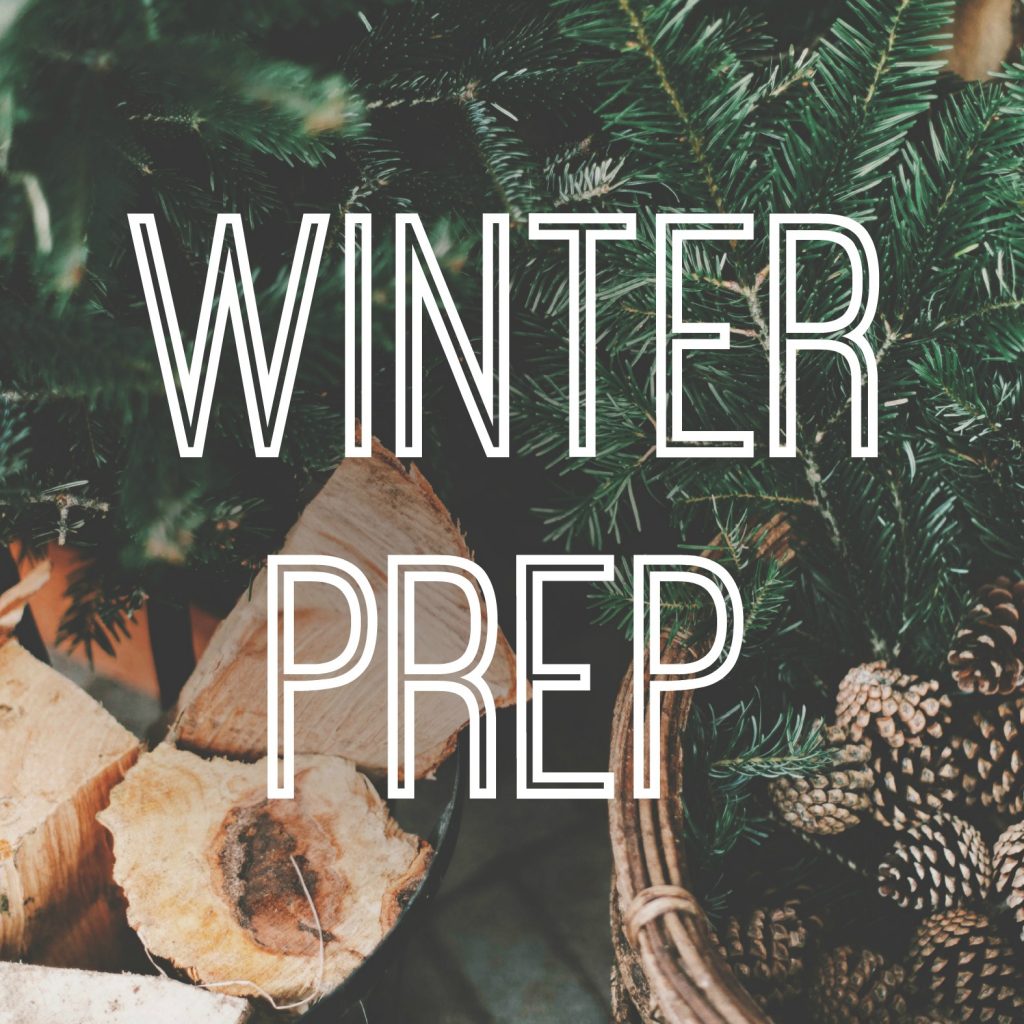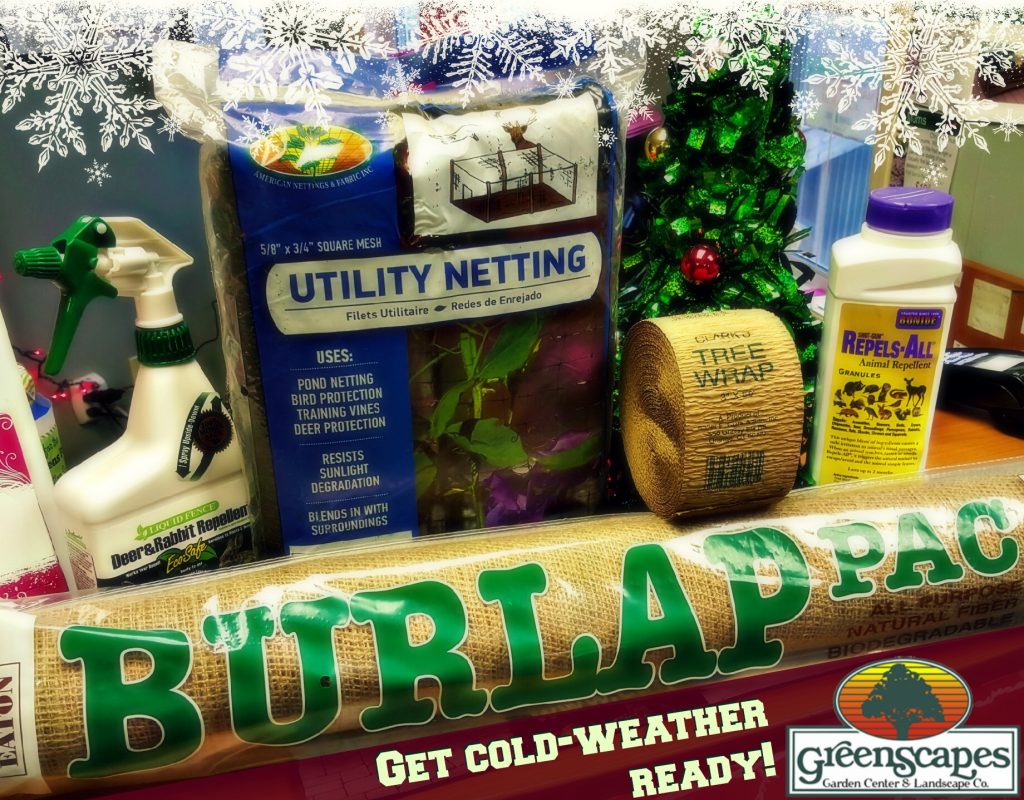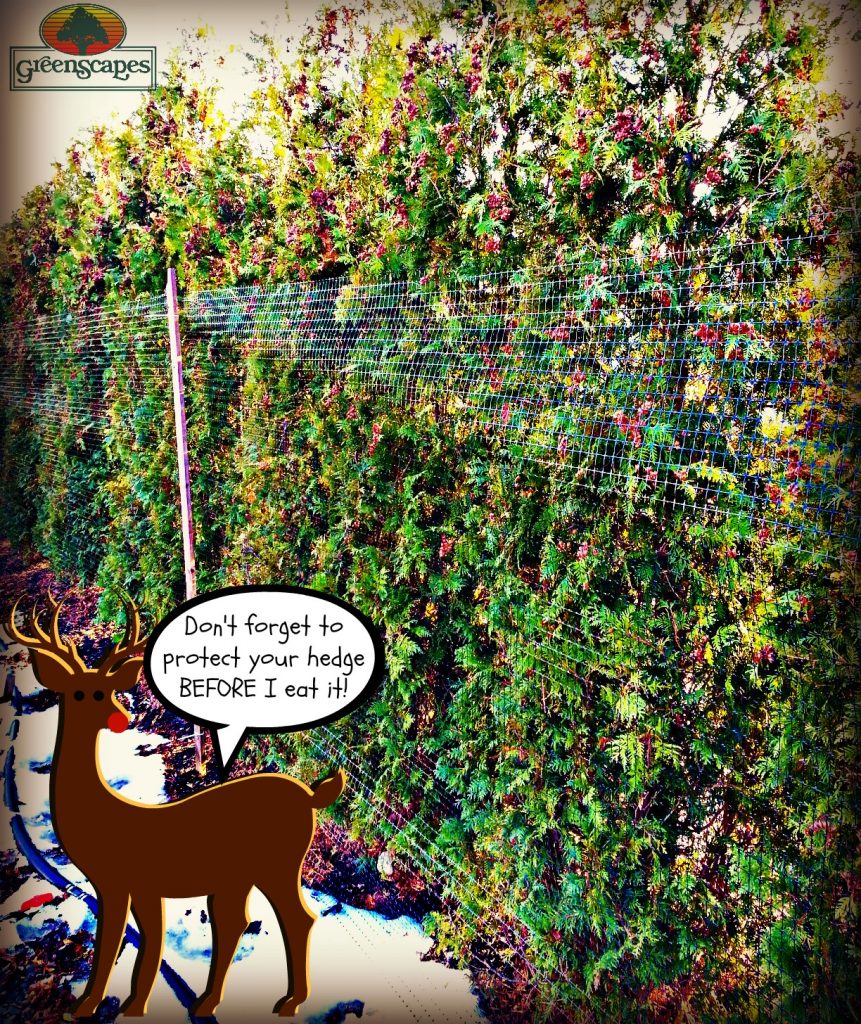Winter in Central New York can be stressful on your trees and shrubs. To increase your plants survival rate there are a few simple steps that can help prevent damage.
Winter Care of Trees & Shrubs
All plants need water to make it through the winter, especially newly planted ones. If the fall is dry, deeply water plants until the ground freezes. A 3″ layer of bark mulch is also recommended to help reduce moisture loss from the soil and to insulate the root system from fluctuating temperature. Keep mulch several inches away from the trunk of the plant.
Evergreens & Broadleaf Evergreens
Evergreens and broadleaf evergreens do not shed their leaves, so they need a good store of moisture going into the winter because they continue to transpire (give off water vapor) through the cold months. Most winter damage on evergreens does not come from the cold but from the drying effects of winter sun and wind. With the soil frozen hard, plant roots cannot take up water to make up for moisture lost through transpiration. This dehydration is the cause for the browning and burning of foliage. Most established evergreens are hardy enough to make it without being protected, although there are some exceptions, such as Dwarf Alberta Spruce and any newly planted evergreens.
To protect a more vulnerable evergreen, a windbreak should be placed around the plant. To make a windbreak, hammer four stakes into the ground and staple on a burlap covering. Never use plastic, or you could “cook” your plants on sunny days.
Heavy snow and ice can cause damage by bonding or breaking branches. Upright evergreens, such as Arborvitae and Juniper, are subject to snow and ice damage. Evergreens would benefit from a teepee shaped wooden frame to prevent damage from snow, sun, wind and ice buildup on your roof. Burlap can be stapled on the open sides of the teepee to provide more protection. Tying upright evergreen branches with heavy twine will also help prevent breakage.
Deciduous Trees
The trunks of young, thin barked or recently planted trees can be susceptible to sun scald. On mild winter days, when the sun is shining on a tree trunk (usually on southwest side), the trees cells break dormancy. When the sun sets and temperatures get colder, the active cells are killed. This injury may appear as sunken or discolored bark and by spring the bark may crack and fall off in areas along the trunk. Wrapping the tree in tree wrap or plastic guards will protect your tree from sun scald. Remove wrap in spring to prevent any insect and disease problems.
Perennials
Perennials should not be cut back until all foliage is brown and dead. It is your decision on whether you cut the plants back now or in the spring. If you have any leaves with diseases such as black spot, powdery mildew, or rust, you should rake up those leaves and dispose of them (Do not use in your compost bin). Sensitive perennials can be covered with straw or bark mulch to help insulate through the winter.
Animal Damage
Food shortages in winter force animals to feed on bark, twigs, flower buds, and foliage. Deer, rabbits, mice, and voles are the usual culprits. Using tree guards or 1/4-inch mesh hardware cloth can protect tree trunks. The cylinder should extend 2 to 3 inches below the ground line for mice and 18 to 24 inches above the anticipated snow line for rabbits. For deer, a fence at least 8-feet high or utility netting wrapped around the head of the tree is the best defense. Repellents will work better in drier months for they will eventually wear off with wet weather and need to be re-applied.
Salt Damage
Salt used for deicing walks and roadways can cause injury or dieback in trees and shrubs. Salt runoff and spray can injure roots and foliage. The best way to avoid salt damage is to not plant in those areas or use salt tolerant plants. A burlap barrier (2-layer) can also be used to protect plants from salt spray.



